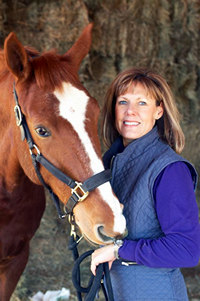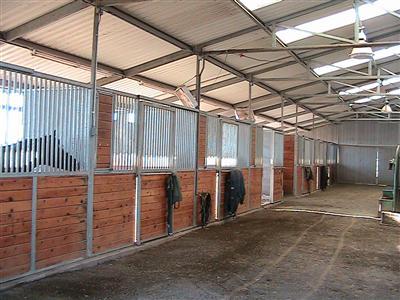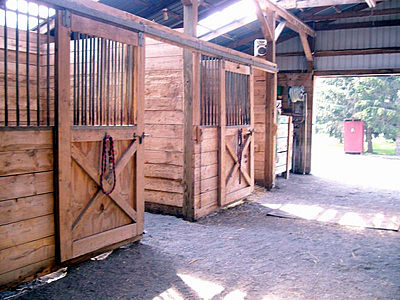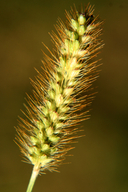|
Greetings!

Mary & Redge |
Thank you for joining me in my communications with horse people
from all over the world!
We all love horses, we have that beautiful passion together and
we also have in common that we are human beings. My Women & Horses
newsletter covers topics related to horses, all things equine
and the people that surround them. There's so much that horses
can teach us, so much horses have to say, so much horses provide
in our lives; a journey with horses is truly unlimited.
From newsletter to newsletter I provide insights, observations,
questions and solutions to numerous inquiries around horses and
the world they live in. I also provide useful resources, web links,
experts, books and articles that I feel might be helpful to all
horse interests.
The Women & Horses newsletter stands for all horse and pony breeds
as well as donkeys and mules, all disciplines and uses of the
horse and wild horses. Past newsletters have been archived on
the website for you to check out anytime and I'm always open to
receiving your inquiries via email.
Check out my website calendar often to find out if I will be
speaking or conducting clinics in your area. I look forward to
meeting you and your horse(s) and find out what you are up to.

What's Up With Mary? At the 2010
World Equestrian Games
Countdown until September 25
I am pleased to share with you the latest information about my
participation in the World Equestrian Games, September 25-October
10, 2010.
Honored and delighted are two of the words I keep coming up with
around this special event. I will be conducting live horse demonstrations
on October 7, 8, 9 and 10 in the Breed's Arena introducing "The
Focused Horse" natural and safe ways to calm the anxious, unfocused
horse.
I will be using my "The InBalance Horse" essential oil blend
and have it for sale in a new smaller version to demonstrate how
aromatherapy starts the shift of the nervous system.
You never know what horses are going to do in front of large
crowds so I always go with what I see, hear and feel from the
horse. I will be performing and demonstrating mouth massage, TMJ
acupressure, calming acupressure points in the body, trigger point
and myo-fascial release therapy as well as finding any hot, tight,
braced and blocking energy and releasing these negative cells...in
my 30 minute time allotment!
My lectures will be femalecentric and look at how women approach
horses and riding. I'll address the intuitive and the physical
relationship between women and horses including aspects of why
women love horses, are curious about the natural affinity and
passion for horses, and riding techniques and saddle fit designed
specifically for women!
I'll even provide good news for women who want to keep riding
into their golden years! And the guys can learn a great deal from
my presentations too. There will be many more "Yes Dear" moments
and saved marriages if guys understand our differences and what
we as women need to be safe and comfortable.
It's all designed to be empowering, exciting, enlightening and
refreshing speaking on a world stage.
I hope you will join me in this intriguing venture and stop by
the booth! More information on the Women & Horses WEG booth coming
soon.
Each newsletter leading up to the Games will provide information
on products and activities beneficial to you and your horse so
watch for them on my website.
Balancing the World of the Confined Horse:
Part Two "A Holistic Approach: Minimize the Constraints"
Why do I feel the need to focus on the confined horse?
Contemporary horse mental, physical and emotional health issues
are a result of confinement and a lack of management practices
to support the horse and how he functions.
I always start with the health and integrity of the horse's
gastric-intestinal tract.
Caron Haggerty, CNC, of Blue
Ridge Distribution has been working with horse and dog nutrition
and herbal products for 20 years. She started Equine Organics
almost 15 years ago and formulated the first Certified Organic
Nutrition and Detox product for horses in the country.
She teaches us that there are over 200 vitamins and minerals
horses in the wild search for in their grazing and roaming to
stay healthy. So how is it that we can provide grain, hay and
limited pasture grazing and expect them to perform and stay sane
and sound?
Many horses today are simply functionally malnourished.
We add more and more supplements trying to make up for what they
are missing,and we just don't know exactly what they are searching
for, what is the right amount and when they will want it. It seems
to be an endless and unsatisfying cycle. They have no say in their
diet, we make all of their decisions and they eat what we provide.
This is a constraint.
We also confine them to dark spaces with endotoxins (odors and
particulates challenging to the respiratory system), constrain
their movement necessary for digestive and hoof health, and remove
them from their need to be in a herd.
If we are the culprit of damaging displacement then we must
take responsibility to be the solution.
Let me just say I am on the same journey as everyone else. We
are all facing land use, budget and scheduling restraints. And
horse keeping varies according to traditions from the past, geographical
areas, weather patterns and how the horse is used. There are fewer
and fewer horse owners that actually have their horses at home
and can manage every aspect of their horse's lives. Even some
people who do have horses at home end up finding they still do
not have the time, the labor or the energy to maintain the ideal
horse environment.
Creating the "ideal" horse environment and program that will
work for everyone is impossible, however, I do believe there are
basics in creating a balanced horse that will work and serve people
who are passionate about horses.
First, we must honor what the horse needs and wants. In my last
newsletter (April 2010) I discussed how to begin shifting the
horse's nervous system so he or she may better handle and adjust
to what is being asked of them. These techniques will keep the
horse emotionally balanced while you continue to set up his or
her environment, nutrition, physical health care, exercise program
and regular attention.
In conjunction with our nervous system work, energy release
(watch for more in next newsletter) and body work we can provide
a balanced lifestyle to the best of our ability.
Here's your checklist for horses in confinement. This applies
to all seasons! Even if you have to close up your barn during
the winter horses still need just as much natural ventilation,
air circulation and light as they get in the Summer.
1. Plenty of air flow, circulation and ventilation - Fans, louvered
windows and vents, open windows and doors, wide aisleways and
high ceilings.
The photo below shows the natural light and air circulation coming
from every direction around the horse.

2. Plenty of natural light - High ceilings, big open doorways,
wide aisles, windows and skylights.

3. Clean fresh odor at all times. Clean stalls daily using lime
dust or Sweet PDZ stall freshener on the wet spots and completely
strip stalls out at least once per week replacing all bedding.
4. Level the stall, wash rack, grooming areas and aisle floors.
The horse's posture depends on living on level surfaces.
5. Clean fresh water available at all times (I am not a fan of
automatic waterers because they are not always reliable, you cannot
detect how much water the horse is consuming, they can freeze
in the winter and if they are tilted they will run constantly
and flood the stall. 2 buckets are the best option.)
6. For race, show and rehab horses that are stall bound 24/7,
try and get them out of the stall 2-3 times per day for exercise
and/or in hand grazing.
7. Have pastures and hay inspected by a local agricultural extension
specialist. Ask them or find out who supplies hay that is free
of harmful chemicals, yellow foxtail bristlegrass, fescue and
any noxious weeds. Talk to your extension agent about how to grow
good horse pasture without using harmful pesticides and herbicides
and how to rotate them for the best growth cycle.
 *Fescue
hay is for ruminants and can be a cause of Wobbler's Syndrome
in horses. If you are considering transforming a cattle farm
into a horse farm make sure you have the pastures evaluated
by a professional. *Fescue
hay is for ruminants and can be a cause of Wobbler's Syndrome
in horses. If you are considering transforming a cattle farm
into a horse farm make sure you have the pastures evaluated
by a professional.
 *And
avoid feeding rolled round bale hay unless you are sure it is
fresh, clean and dry in the center. If it is stored for long
periods of time it may become moldy and be a source of botulism
in horses. *And
avoid feeding rolled round bale hay unless you are sure it is
fresh, clean and dry in the center. If it is stored for long
periods of time it may become moldy and be a source of botulism
in horses.
8. Feed as organically as possible. Read feed bag labels and
stay away from: Grain by-products, soy, undistinguished sources
of protein and sugars. Oils and other liquid binders and fats
can easily go rancid sitting in the mills and in the bags of feed.
Do look for "certified organic" this indicates the food was grown
in certified 7 year clean soil and was produced without the use
of preservatives, pesticides or herbicides; all very toxic to
your horse.
9. Provide supplements such as free choice minerals and salts,
herbs to support their immune system, liver and kidney function
and additional pure supplements for joint and soft tissue wear
and tear.
I started my horse on a complete organic nutritional program
about 60 days ago and he is looking and feeling like a champ!
I'll have photos for you soon.
I was inspired last Fall at the Women's
Horse Industry Association conference by Pat Cleveland owner
and creator of Red Leaf Farm.
By the way I am a member of WHIA and encourage all of you to
check it out and join. It is a growing motivated organization
of women in all aspects of the horse industry.
Create your own path when designing a lifestyle for you and your
horses. Horses should eat and be kept as naturally as possible.
It makes a difference to them, to you, to others and ultimately
to our future.
Thank you for loving and honoring your horse(s)! The best days
are harmonious horse days.
Happy Riding! Mary D. Midkiff
BEWARE: Yellow Foxtails!
|

Yellow Foxtail Bristlegrass
|
This innocent looking seed head can cause havoc with horses and
dogs. Yellow foxtail bristle grass has yellow or orange bristles,
which are more rigid than other soft-bristled foxtail varieties.
This past February I was introduced to the dastardly weed and
so wish we had never met. It started when one of my clients was
out of town and I was watching over her horses. I also train her
horses and one in particular I have come to know very well. His
name is Bailey.
I went out to check on Bailey and the others on a snowy day.
I always start my grooming with a gentle mouth massage and right
away felt unusual ulcers in Bailey's mouth. I lifted his upper
muzzle to find one large deep red ulcer and a red swollen gum
line all around his teeth. My first thought was herpes or a viral
condition so to be safe I called the vet.
The vet came out the next day and right away said he had seen
this before and it was a reaction to Foxtail. The Yellow variety
has sharp burrs or bristles all around the seed head and these
burrs get caught in the horses teeth and gums and become embedded
and then infect the tissue. The tissue breaks out in ulcers once
the burrs dig their way in. Horses can get bad infections, stop
eating and have secondary issues result from this pesky weed.
I went out to his pasture and removed all of the hay that had
the Foxtail in it, in this case, all of it. I showed the foxtail
hay to the farm manager and he has since divided out the bales
with the foxtail in it.
Since that day we checked all the horse's gums and another horse
had the same mouth condition, one had throat sores and we are
even wondering now if it doesn't also lead to inflammation in
the colon. With Bailey, the vet cleaned his gums with cotton and
I rubbed camphophenique on his gums daily and took away the foxtail
hay. Within one week he was much better and within three weeks
all the ulcers and inflammation was gone. He still, however, has
a very irritable bowel and is uncomfortable around his lower abdomen.
We are treating him for ulcers, still suspicious that the foxtails
started the colon irritation.
There are hundreds of websites, articles and blogs about yellow
foxtail. How to manage it, kill it, recognize it and more.
If you have any information about yellow foxtail specific to
horses please send it along to me and I will put it out to my
email list.
top
| read
previous newsletters
|

 ™
™![]()



 *Fescue
hay is for ruminants and can be a cause of Wobbler's Syndrome
in horses. If you are considering transforming a cattle farm
into a horse farm make sure you have the pastures evaluated
by a professional.
*Fescue
hay is for ruminants and can be a cause of Wobbler's Syndrome
in horses. If you are considering transforming a cattle farm
into a horse farm make sure you have the pastures evaluated
by a professional.  *And
avoid feeding rolled round bale hay unless you are sure it is
fresh, clean and dry in the center. If it is stored for long
periods of time it may become moldy and be a source of botulism
in horses.
*And
avoid feeding rolled round bale hay unless you are sure it is
fresh, clean and dry in the center. If it is stored for long
periods of time it may become moldy and be a source of botulism
in horses.